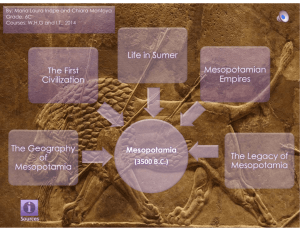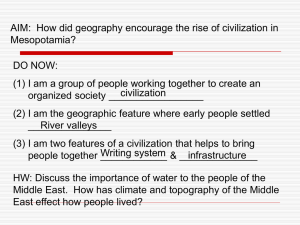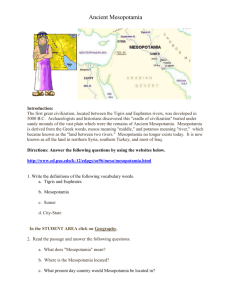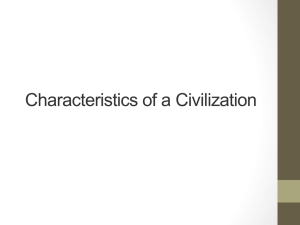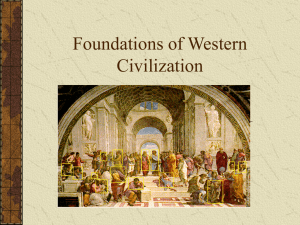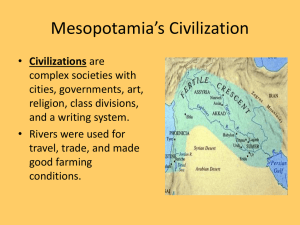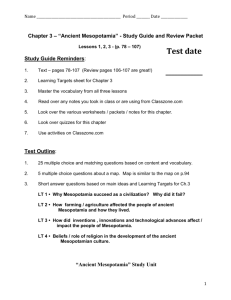ANCIENT HISTORY: Guided Reading 1.3 The Beginnings of Human
advertisement
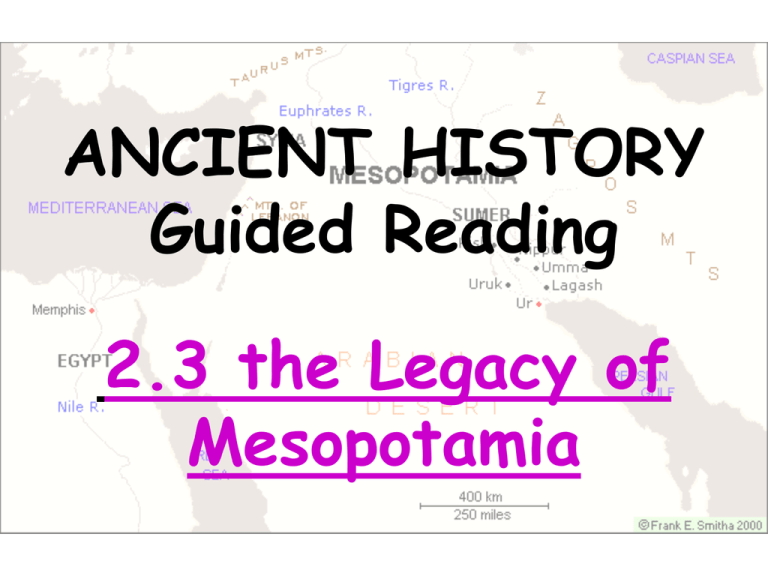
ANCIENT HISTORY Guided Reading 2.3 the Legacy of Mesopotamia As you read, fill in the table with information about Mesopotamian civilization. I deleted directions in order to make the boxes bigger … you’re going to need that. Main Idea A The rules set down by Hammurabi were an important step in the development of civilization in Mesopotamia. 1. 2. Main Idea B Writing was one of the major breakthroughs for the civilization of Mesopotamia. 3. 4. Main Idea A The rules set down by Hammurabi were an important step in the development of civilization in Mesopotamia. 1. Rules were written down for everyone in the empire to follow. Main Idea A The rules set down by Hammurabi were an important step in the development of civilization in Mesopotamia. 2. Hammurabi’s Code was based on the idea of “an eye for an eye.” It did not apply equally to all people. Main Idea B Writing was one of the major breakthroughs for the civilization of Mesopotamia. 3. Writing developed in Mesopotamia. Sumerians kept records such as sales, tax payments, gifts for gods, marriage and death. Main Idea B Writing was one of the major breakthroughs for the civilization of Mesopotamia. 4. Scribes used a clay writing surface and sharp tools. When the clay dried, it left an almost permanent record. Historians study the writing, archeologists study the clay. Main Idea A -- Rules 1. 282 laws about trade, labor, property, and family, practicing medicine and controlling animals … and punishment 2. not applied equally to all 3. “an eye for an eye” only if noble was victim 4. a person who accidentally broke a law was just as guilty as someone did so purposefully 5. the laws were written down for everyone 6. they were posted in every town Main Idea B -- Writing 1. used to keep records such as sales 2. there were Scribes (writers and record keepers) 3. Scribes were greatly respected 4. writing was used for sales, trades, tax payments, gifts for gods, marriages, deaths 5. the gov’t used scribes to figure out requirements for military and building projects 6. by using clay, there was a nearly permanent record 7. the writing was called cuneiform


